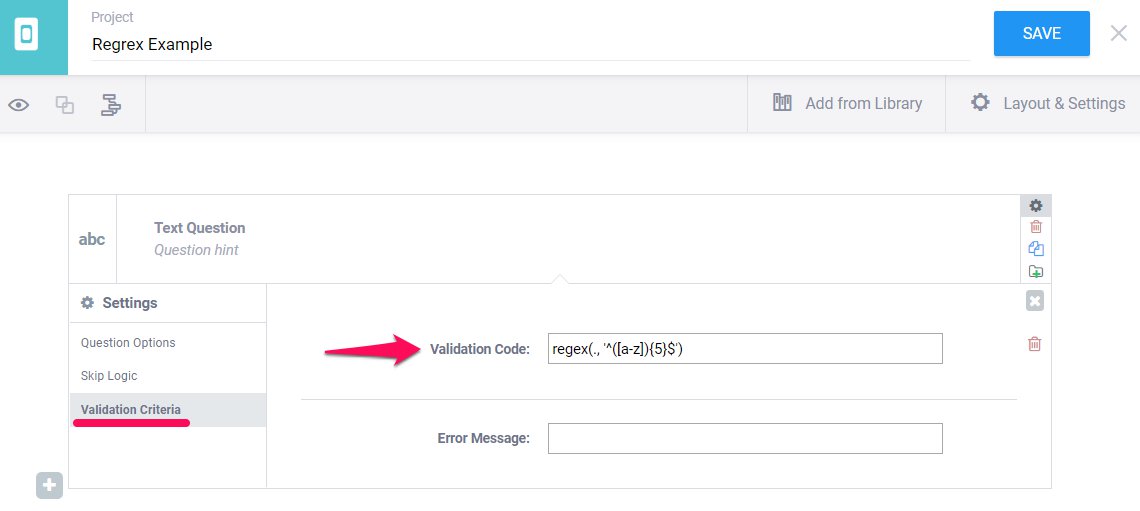

So far, this article about JS regular expression is limited to 1-2 integers, or at most contains two decimal places. JS regular expression - limit number lengthįor example: limit the number of words to 4Įxplanation: it starts with and ends with four numbers, so the number length is limited to four. If any condition is satisfied, they are qualified If they are written together, they are connected by the symbol |, which means or. Matches the beginning of the string, or the beginning of. 0 or 000.Var reg = / ^ - D $/ // first (0), followed by a dot, followed by two to four decimal places (0-9) Roll-over elements below to highlight in the Expression above.Here are a few more common ranges that you may want to match: To do this, replace the word boundaries with anchors to match the start and end of the string: ^ ( | | 1 | 2 | 25 ) $. If you’re using the regular expression to validate input, you’ll probably want to check that the entire input consists of a valid number. Regular expression engines consider all alphanumeric characters, as well as the underscore, as word characters. This way the regex engine will try to match the first word boundary, then try all the alternatives, and then try to match the second word boundary after the numbers it matched. There are plenty of comments in the regex, so if you read the defined subroutine page, you shouldn't need further explanations. Since the alternation operator has the lowest precedence of all, the parentheses are required to group the alternatives together. There you can decide to match a big number by calling the bignumber subroutine with (&bignumber), or to match smaller numbers using subroutines such as (&oneto99), and so on. The regex then becomes \b ( | | 1 | 2 | 25 ) \b. If you’re searching for these numbers in a larger document or input string, use word boundaries to require a non-word character (or no character at all) to precede and to follow any valid match. Explanation: match only if starting with a digit (excluding negative numbers), optionally followed by (non-capturing group) a dot and 0-4 digits. While the float data type takes less space to store single-precision numbers and it gives results up to 6 decimal places. This matches the numbers we want, with one caveat: regular expression searches usually allow partial matches, so our regex would match 123 in 12345. Through the above two examples, it is clear that the double data type takes more memory to store a double-precision number and also gives the more accurate result up to 16 decimal digits. Putting this all together using alternation we get: | | 1 | 2 | 25. In the 3-digit range in our example, numbers starting with 1 allow all 10 digits for the following two digits, while numbers starting with 2 restrict the digits that are allowed to follow.

Finally, 25 adds 250 till 255.Īs you can see, you need to split up the numeric range in ranges with the same number of digits, and each of those ranges that allow the same variation for each digit. Matching the three-digit numbers is a little more complicated, since we need to exclude numbers 256 through 999. The regex matches single-digit numbers 0 to 9. To match all characters from 0 to 255, we’ll need a regex that matches between one and three characters. Any number of digits preceding the (optional) period.77 works 0.77 works 0077.77 works 0077 works Not using look-aheads and look-behinds has the added benefit of not having to worry about RegEx-based DOS attacks. Since regular expressions work with text, a regular expression engine treats 0 as a single character, and 255 as three characters. This character class matches a single digit 0, 1, 2 or 5, just like. is a character class with three elements: the character range 0-2, the character 5 and the character 5 (again).

This number is usually called signed integer, but you can also call it a non-fractional number. Though a valid regex, it matches something entirely different. The Regular Expression that covers this validation is: /(01-9\d)/ Test This Regex. You can’t just write to match a number between 0 and 255. Since regular expressions deal with text rather than with numbers, matching a number in a given range takes a little extra care. Matching Numeric Ranges with a Regular Expression


 0 kommentar(er)
0 kommentar(er)
